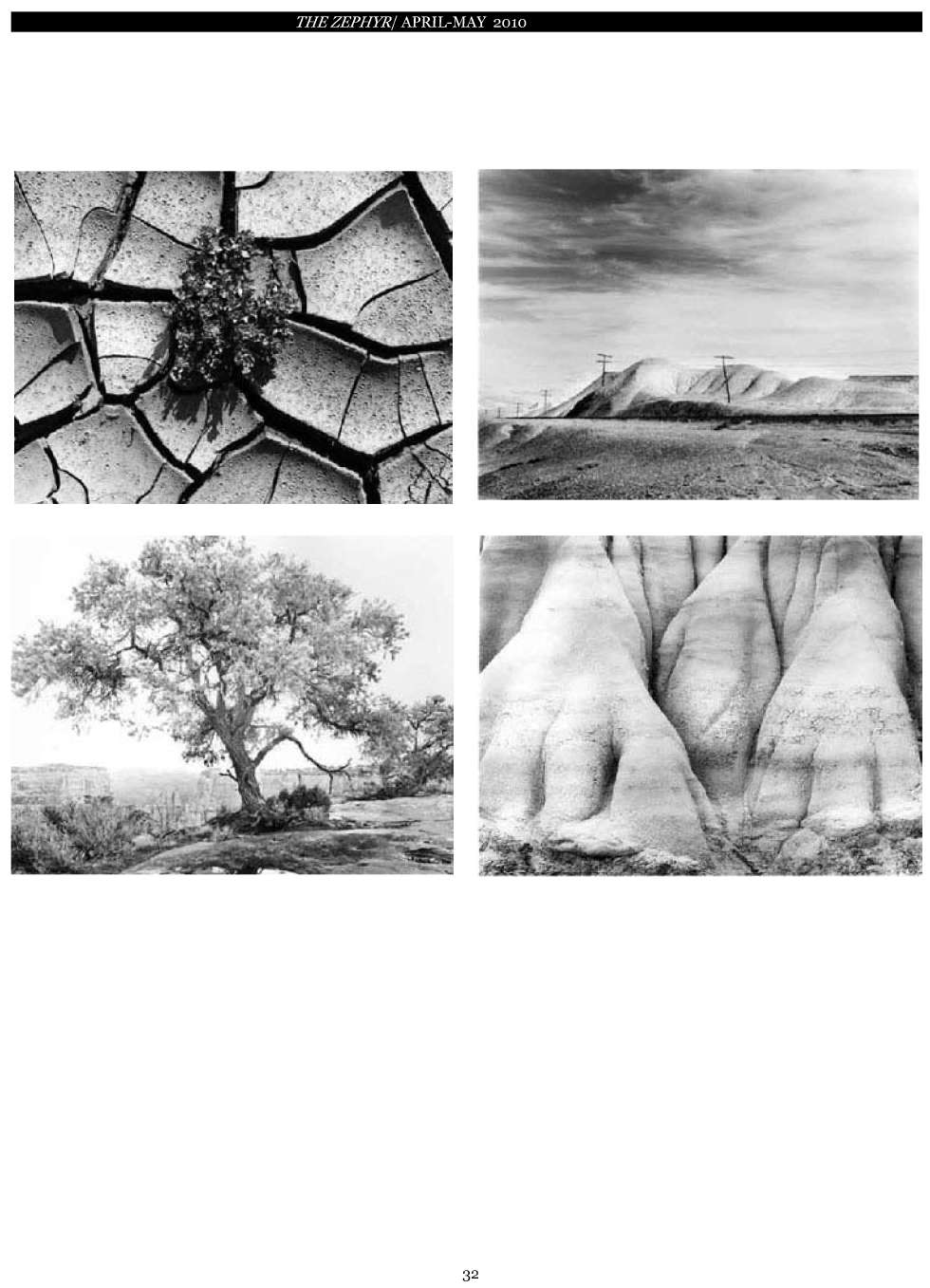<<Prev Home PDF Next>>

DESERT ADAGIO
images and words from a new book by
Doug Rhinehart
The
ambiance of darkrooms is akin to being in a dimly lit cave. They are,
for the most part, utilitarian and they smell bad and are suffused in a
rather sickly amber glow. In an attempt to overcome what could be
stifling and depressing surroundings, I turn to music. Music is a vital
ingredient for my darkroom sessions, as much a part of my work
environment as the chemicals or the paper. The darkroom allows me the
greatest degree of personal expression in the photographic process and
it is important that I approach a printing session with a creative
frame of mind. As the printing session continues, I also need to
maintain a pace and a rhythm that will support and nurture the work.
The music that I play is not just background but an accompaniment to
the creative process.
In
working with the desert images, I find that the slower movements in
classical music, in particular the adagios, seemed to match and even
nurture my inner rhythm and emotions as I worked with the negatives.
The adagios are expressive of how I want my images to speak to the
viewer. I find as I work with the prints, the adagios bring out
feelings within me that were very similar, if not identical, to the
feelings I had experienced while in the desert.
The
desert, like any environment, has its own rhythm and pulse if you take
the time to consider it. More often than not, I interpret the rhythm of
the desert to be one of calm and tranquility. The movement is slow,
gentle and meditative. For me, there is a pervasive sense of awe. So
many times when I am photographing, I feel the pulse of the desert and
consciously try to tap into it in order to guide me in the selection,
composition and exposure of a scene. After I have finished composing
the image, and have come out from under the dark cloth
to
stand next to my camera and release the shutter, I carefully study once
more the subject I will photograph. The feeling of awe rises from deep
within.
I
want my prints to speak softly and with simplicity as an equivalent
expression of my feelings and emotions when I took the photo. Ansel
Adams liked to compare the negative to a musical score and the print as
the performance. In order for my prints to be successful in their
communication, I too, must interpret the negative and listen to the
prints as I work with them, eliciting and coaxing from them as much as
I am able to draw. Printing is not a robotic, cookie-stamping procedure
but takes the human brain, the human eye, the human hand, and employs
human interpretation. I will draw out subtle detail in a shadow, or
more luminosity in a highlight area. I may carefully darken selected
areas within the print in order to guide the viewer to the center of
interest. I may decide to add more contrast in order to give the print
more drama, more volume. I may lessen the contrast to lend a softer
presence. The interpretations are wide-ranging and up to me to bring
them to the print. Therefore, the ambiance of the darkroom is
vital....DR
DOUG
RHINEHART will be in Moab, at Back of Beyond Books on May 8, from 6 to
9pm, to sign books and take questions. It is part of Moab's first "ART
WALK" of 2010. Framed prints of Doug's work will also be on display at
Back of Beyond. For more about Rhinehart's work visit:
<<Prev Home PDF Next>>